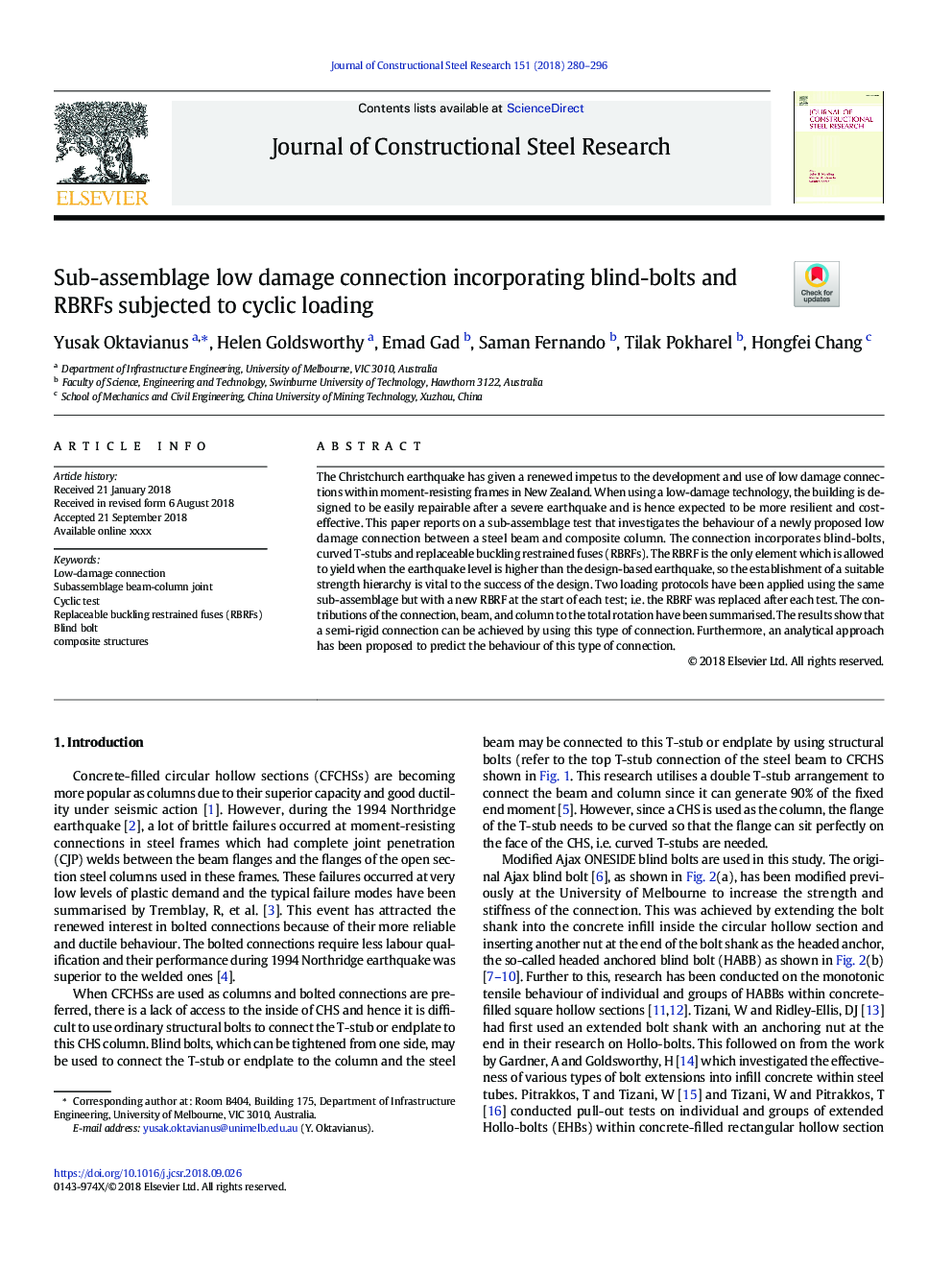| Article ID | Journal | Published Year | Pages | File Type |
|---|---|---|---|---|
| 11024210 | Journal of Constructional Steel Research | 2018 | 17 Pages |
Abstract
The Christchurch earthquake has given a renewed impetus to the development and use of low damage connections within moment-resisting frames in New Zealand. When using a low-damage technology, the building is designed to be easily repairable after a severe earthquake and is hence expected to be more resilient and cost-effective. This paper reports on a sub-assemblage test that investigates the behaviour of a newly proposed low damage connection between a steel beam and composite column. The connection incorporates blind-bolts, curved T-stubs and replaceable buckling restrained fuses (RBRFs). The RBRF is the only element which is allowed to yield when the earthquake level is higher than the design-based earthquake, so the establishment of a suitable strength hierarchy is vital to the success of the design. Two loading protocols have been applied using the same sub-assemblage but with a new RBRF at the start of each test; i.e. the RBRF was replaced after each test. The contributions of the connection, beam, and column to the total rotation have been summarised. The results show that a semi-rigid connection can be achieved by using this type of connection. Furthermore, an analytical approach has been proposed to predict the behaviour of this type of connection.
Related Topics
Physical Sciences and Engineering
Engineering
Civil and Structural Engineering
Authors
Yusak Oktavianus, Helen Goldsworthy, Emad Gad, Saman Fernando, Tilak Pokharel, Hongfei Chang,
